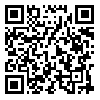BibTeX | RIS | EndNote | Medlars | ProCite | Reference Manager | RefWorks
Send citation to:
URL: http://ijn.iums.ac.ir/article-1-660-en.html
Background and Aim : Education is of the basic rights of the patients, and also, a main recognized role of the nurses. Education is an accrediting criterion of the organizations which provide health services . However, the results of the studies indicate that no effective patient education in different societies has been delivered, and this has had negative individual, family, and social consequences. Due to its interactional and cultural nature, patient education sounds to be vital and necessary to be investigated in specific societies and cultures. This study aims at identifying obstac les which leads to the lack of effective patient education.
Material and Method: The qualitative research approach (grounded theory) was used in this study and open-ended interviews and field observations were used to gather the data. Eighteen nurses, 4 cardiovascular specialists, 9 patients with cardiovascular disease and 4 family members were interviewed at two educational hospitals in Tehran. Interviews were taped, transcribed and analyzed using constant comparative analysis .
Results : More than 800 first level code, 26 categories, and three main variables were extracted as barriers to the effective patient education which are listed as follow: ineffective management, inappropriate organizational culture, and cultural obstructs. Each of these categories includes specific sub categories with specific features, functions, and conditions. Organizational culture played an important and central role in patient education.
Conclusion: Although intervening main factors such as those extracted in this study, namely management, organizational culture, and cultural factors are also considered as patient education barriers in different societies, their nature and functions of each of three factors are totally different in societies. Therefore, precise identification and definition of their situation in planning and improving patient education seems to be very necessary.
Received: 2009/11/2 | Accepted: 2014/08/25 | Published: 2014/08/25
| Rights and permissions | |
 |
This work is licensed under a Creative Commons Attribution-NonCommercial 4.0 International License. |




